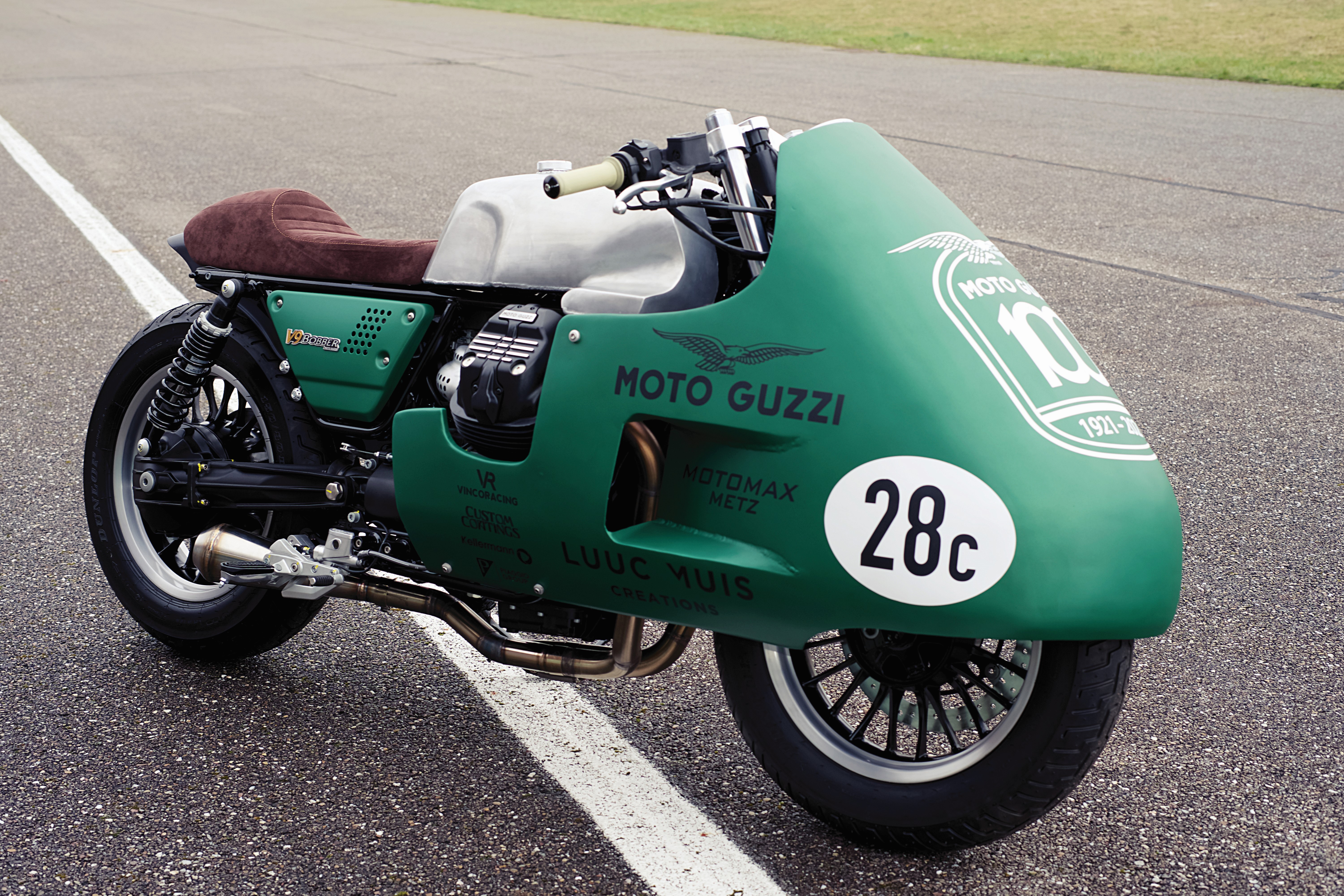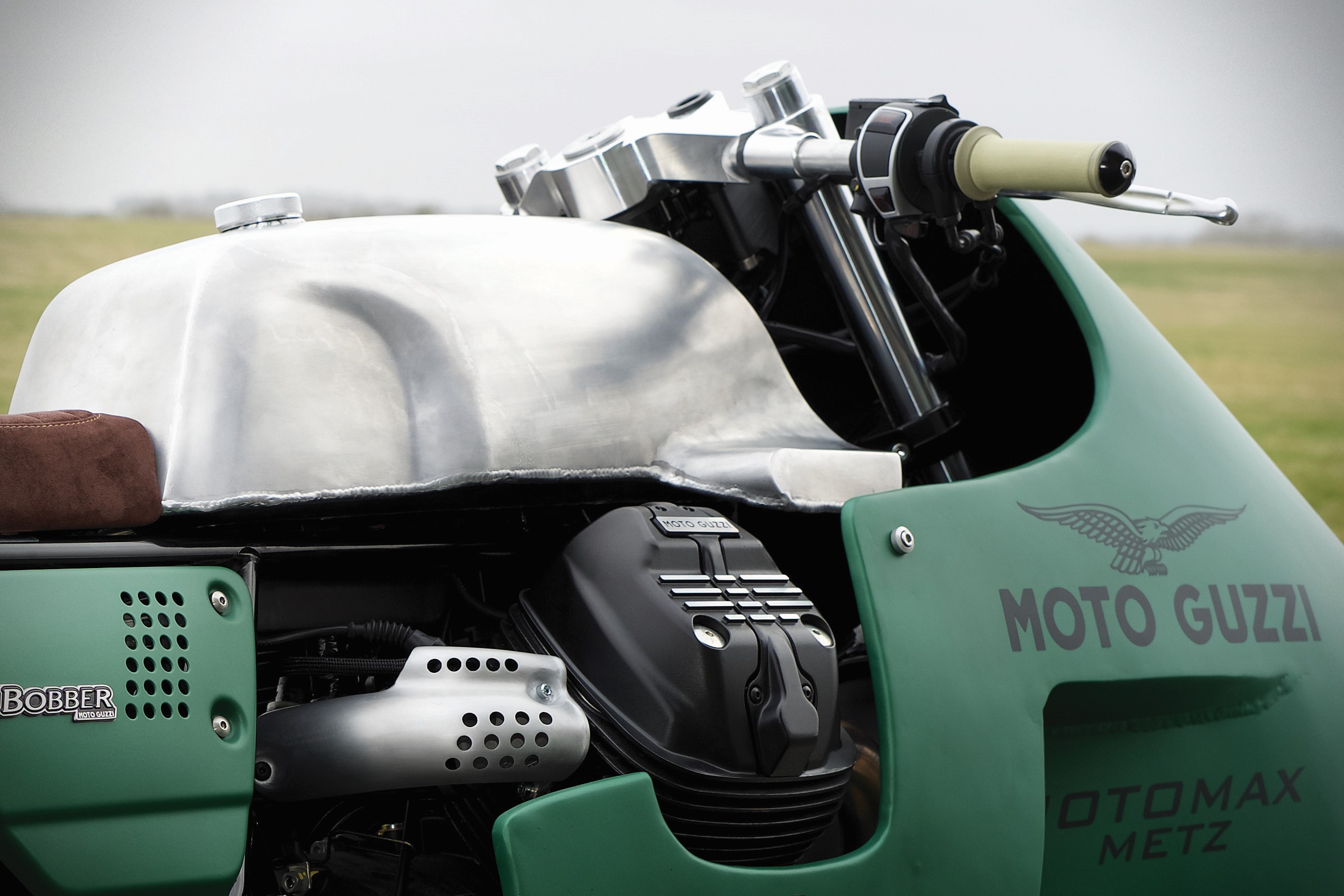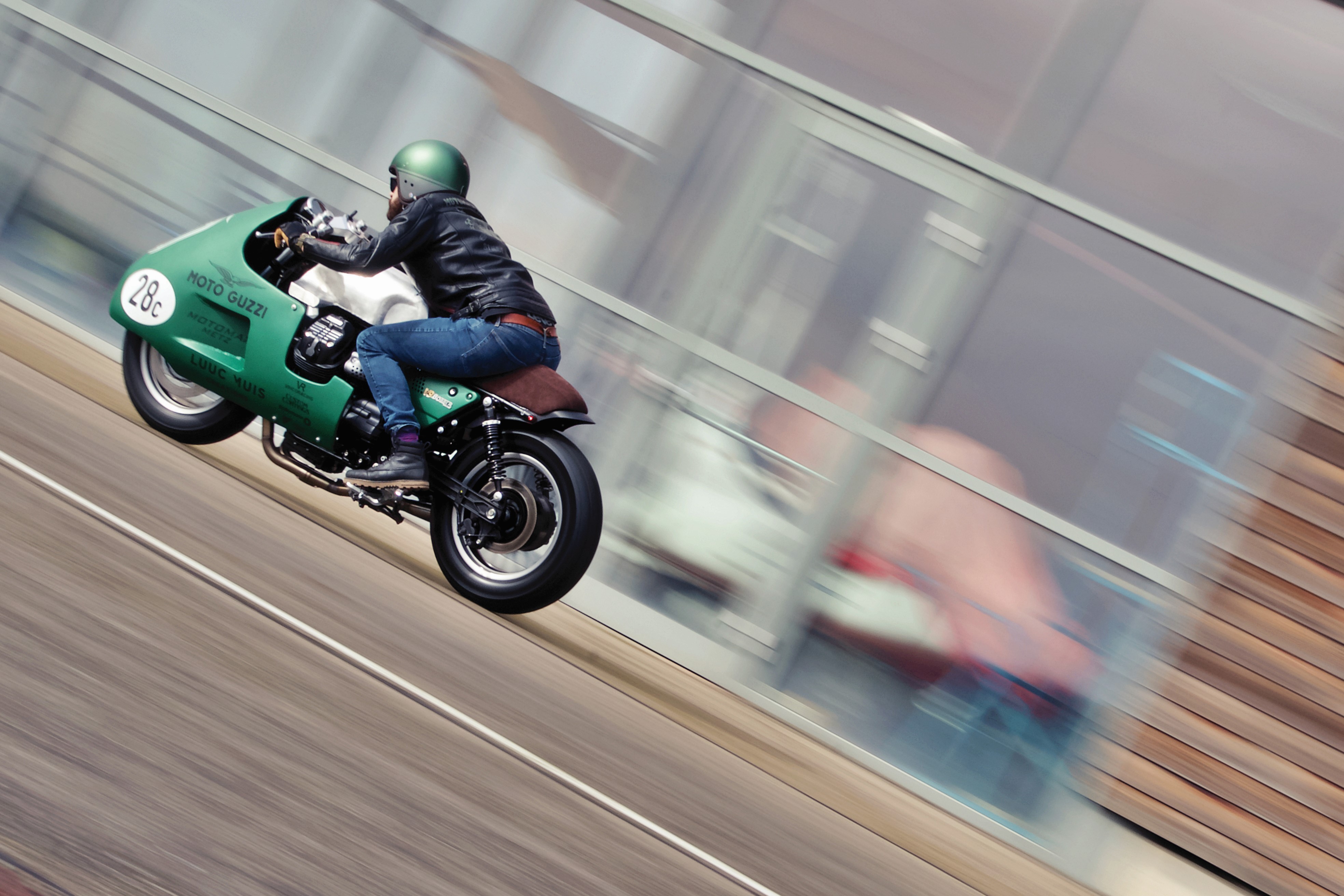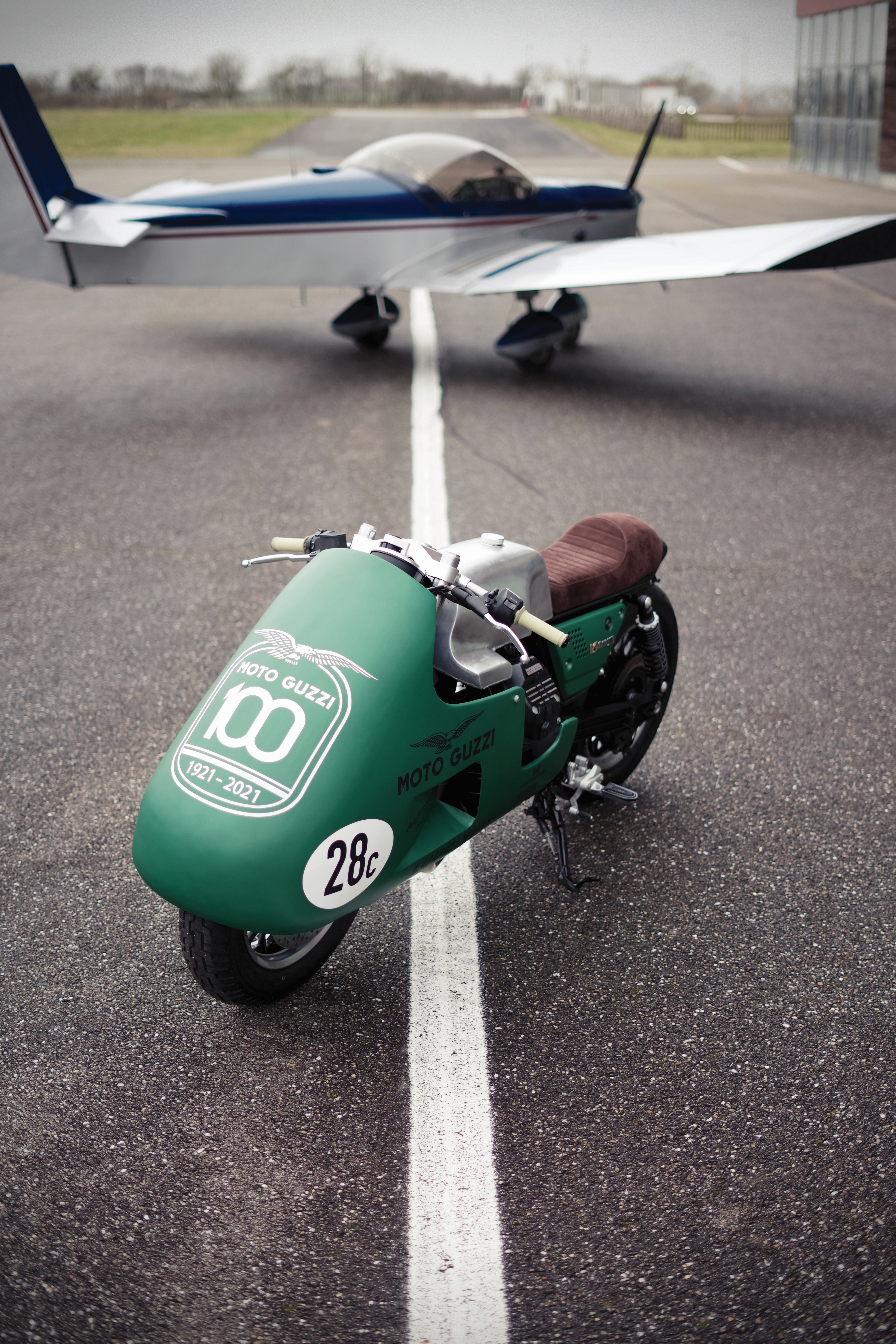LM Creations’ Moto Guzzi V9 Bobber Was Inspired By An Iconic Racing Bike
The legendary Italian motorcycle maker’s most famous bike is reborn with a stunning matte green finish and hand-crafted aluminum.

For a young Luuc Muis growing up in The Netherlands, the art of motorcycle design seemed predestined from birth, arguably programmed into his very DNA. The son of a professional graphic designer, his dad trained Luuc in the aesthetic arts on two fronts: digitally training skills in Adobe software like Photoshop and Illustrator, while also ensuring his son earned grease under his fingernails working on a vintage Volvo in the garage. Wrenching bolts and saturating pixels, a twin-pronged approach.
By the ripe age of 12 Luuc began working Saturdays sweeping floors at a custom motorcycle shop, combining lessons learned from hours glued to the Discovery channel with tooling around in the store’s robust tool shed. Soon the nascent Dutch builder was engineering and manufacturing his very own stretched chopper pedal bike.

When it came time to decide on university Luuc dedicated his studies to industrial product design, building three motorcycles just for kicks during his term. Graduating at the age of 21 he immediately began working in the motorcycle industry designing hardware, aftermarket accessories, helmets and apparel. While a full time employee he managed to win an Indian Motorcycle competition where he was paid to construct his wild Hasty Flaming Buffalo creation—an inspired one-off celebrating the 100th Anniversary of the Indian Scout.
“The design vision for the bike was: What if the design of the Scout had never changed, but the technology did?” Luuc tells us. Heavily inspired by the 1919 Scout boardtrack racer, Luuc deleted a lot of the visual bulk of the modern bike while shedding over 150 pounds of real mass, all while boosting horsepower. “After this project,” Luuc continues, “I decided I wanted to try start my own business building custom motorcycles for marketing purposes, as well as private customers.” Then and there LM Creations was born.
Luckily for Luuc while his Hasty Flaming Buffalo was showcasing in Luxembourg it grabbed the attention of sprawling Indian and Piaggio dealership Motoplex Metz in western France. Luuc shared some concept bikes from his recently launched firm based on the newly released Chief model, and Motoplex Metz quickly invited the entrepreneur to collaborate on an upcoming Indian.
“We got to discussing multiple designs and project possibilities, and I showed the owner the V85 Moto Guzzi I just had finished for Vanguard, a Dutch clothing company who uses Guzzis in their marketing campaigns,” the Dutch designer illuminates. “And we sort of dropped the Indian idea and pursued the heritage-based 100th Anniversary design build for Guzzi.”

The inspiration for LM Design’s Moto Guzzi Centennial Anniversary was arguably the Italian motorcycle manufacturer’s most famous bike: the V8-powered Grand Prix racer built from 1955 to 1957. Designed by legendary engineer Giulio Cesare Carcano for their GP racing team, the lightweight “Otto” pioneered engine design by water-cooling its 500-cc powerplant, utilizing dual overhead cams, and adding a dedicated carburetor to each of the eight cylinders. With this iconic two-wheeler as the build’s north star, Motoplex Metz ordered a new V9 donor for the project, and two weeks later Luuc picked up the bike and started the process.
“The V8 is one of the most famous Moto Guzzi’s ever, so that made it the perfect starting point,” Luuc explains of the Otto. “Of course it’s very challenging to make a street bike based on a bike solely built for racing while still capturing the characteristics and maintaining rideability. I had to play around with riding positioning controls, steering angles, ground clearance, aesthetics and not making it look like a goofy fairing that didn’t feel right as a proportion on the bike.”
One of the biggest challenges facing LM Creations was that due to road homologation purposes they could not adjust the frame; certain anchor points were unchangeable. So after stripping the donor down to just its frame and engine, Luuc began banging all the aluminum sheet metal—fairings, gas tank and seat pan—by hand.

No body filler was used on the fairings because they wanted their homage to represent the handmade nature of the original Otto, which was also built 100% by hand in Mandello del Lario, Italy. To mirror its inspiration, the fairings were then powder-coated in a soft matte green finish taken from Moto Guzzi’s modern color-suite.
“The fairing was a challenge by itself, getting it symmetrical and smooth,” Luuc expounds. Great pains were taken, from clay modeling to 3D scanning, to ensure the manifestation from 2D digital page to hammered aluminum IRL would maintain the proper balance and proportion for a flawless, accurate build. The results speak for themselves.
“A well-designed part even on a custom bike will look factory, and that’s always somewhat the aim I’m going for,” says Luuc of his strive for manufacturing perfection. “The best compliment for me sometimes is if someone asks, ‘Where did you buy that?’ or ‘Is that stock?'”
This article originally appeared in the January/February 2024 issue of Maxim magazine.
Follow Deputy Editor Nicolas Stecher on Instagram at @nickstecher and @boozeoftheday.
